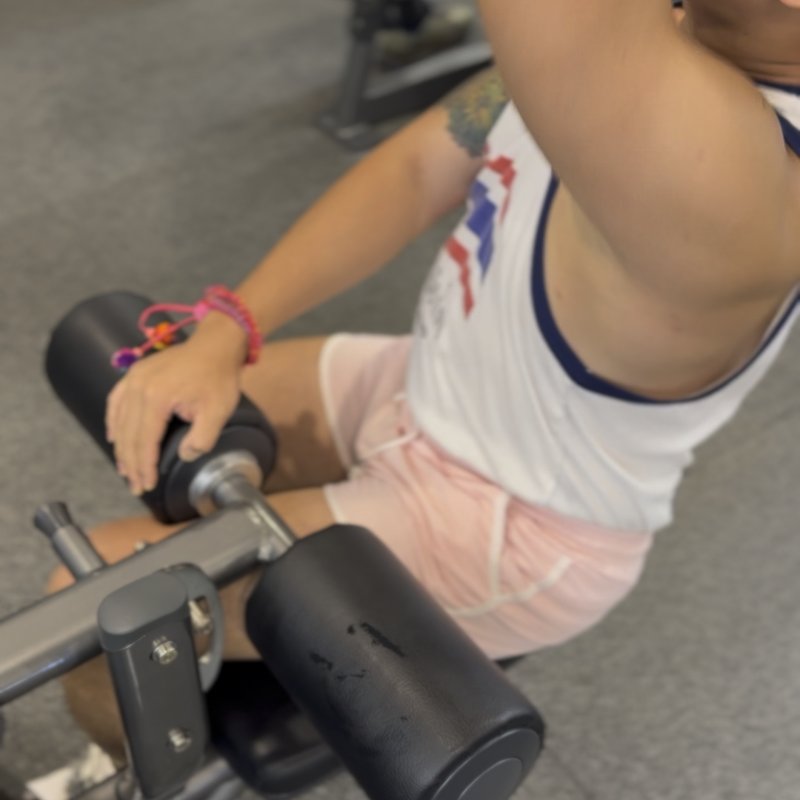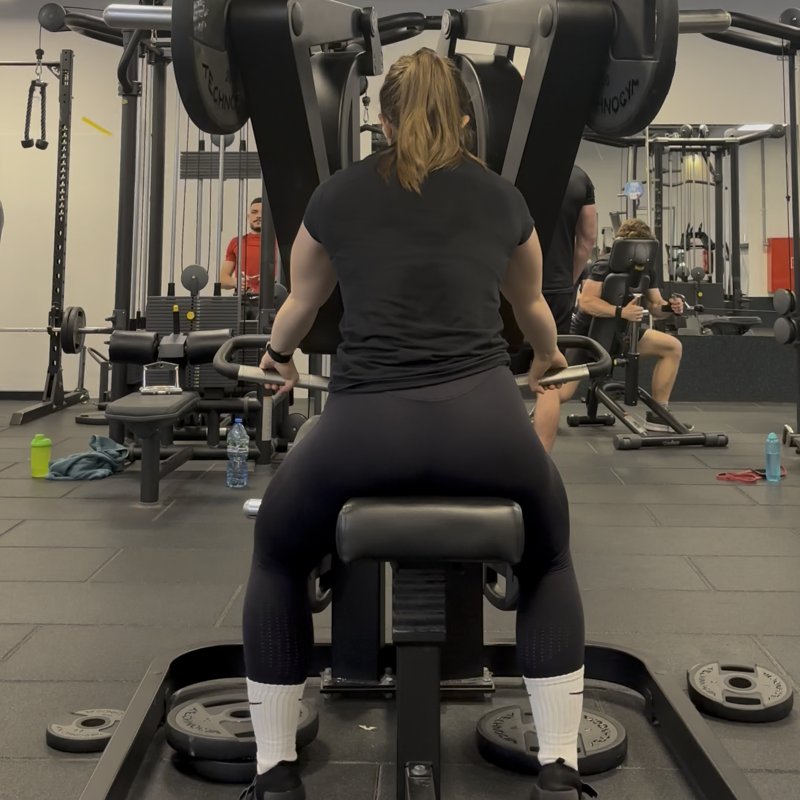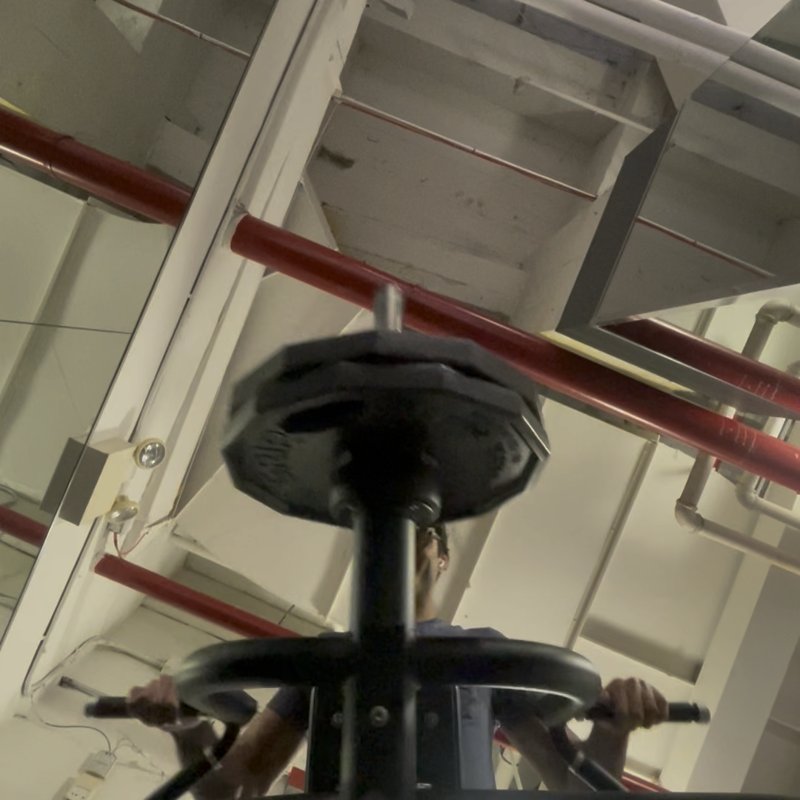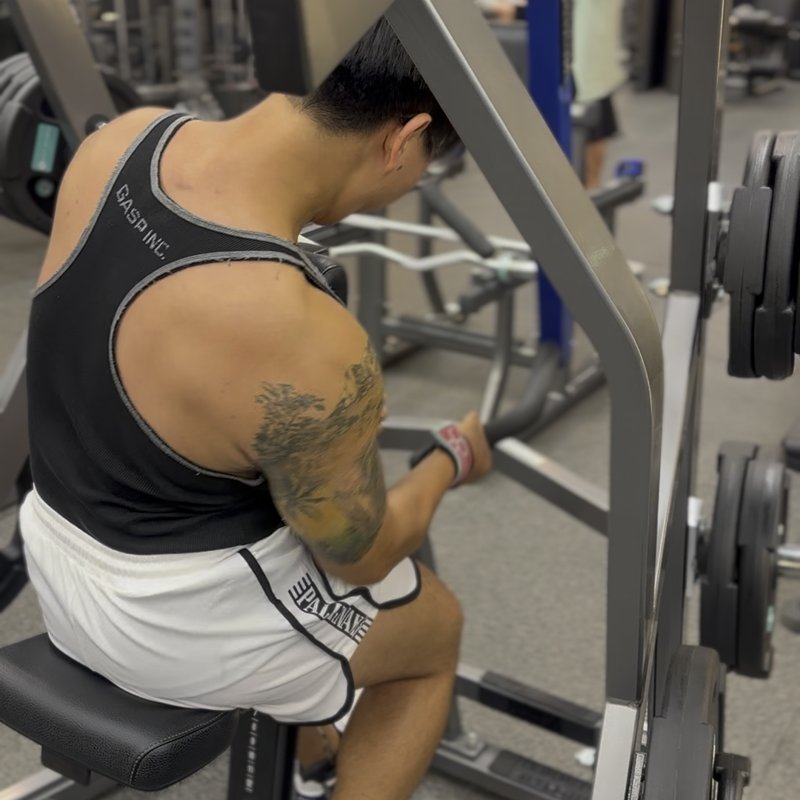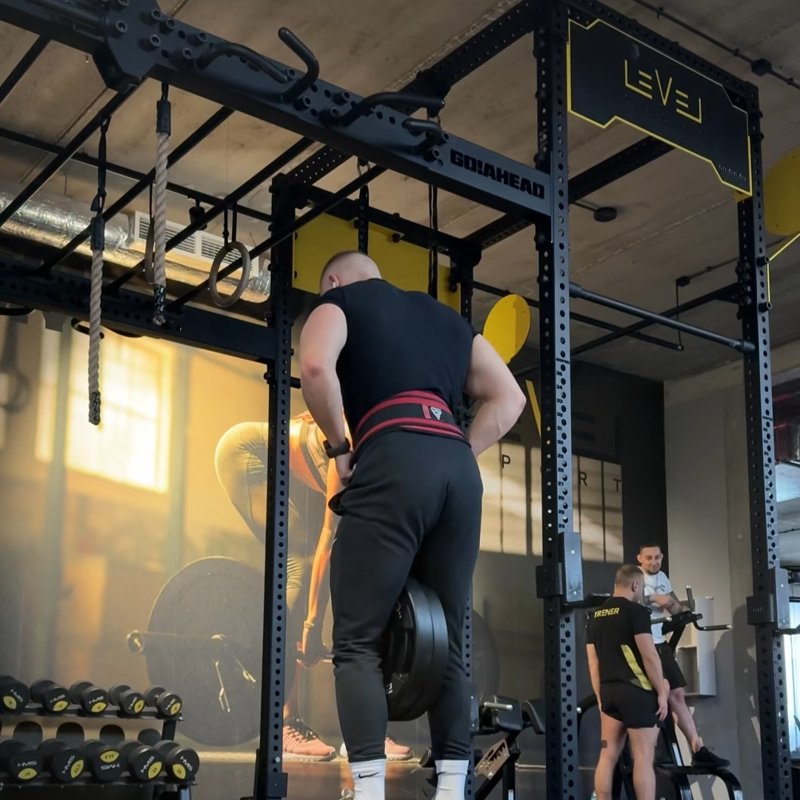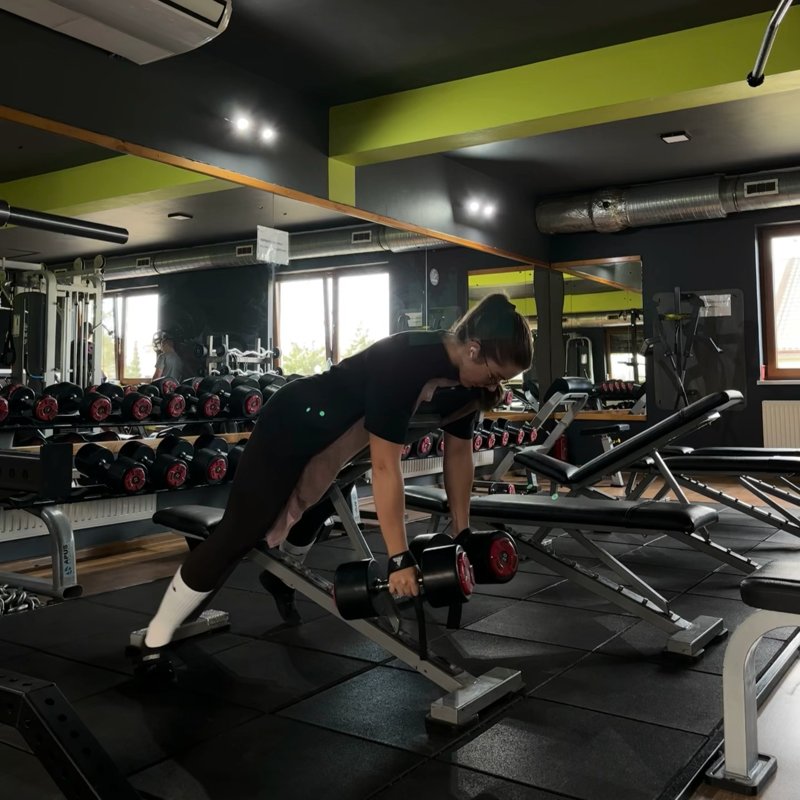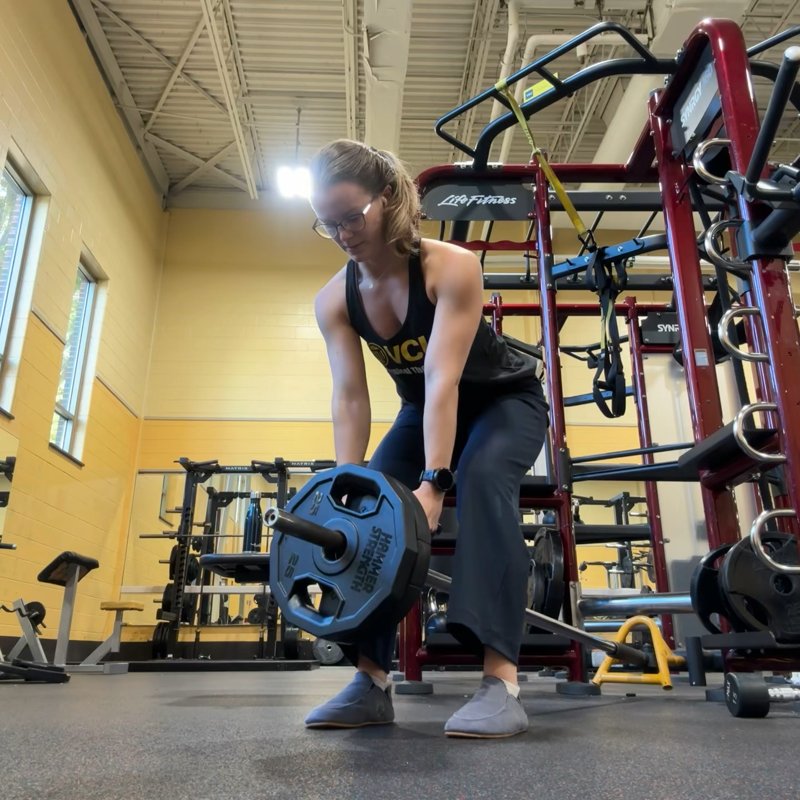Close-Grip Lat Pulldown: The Ultimate Guide
The Close-Grip Lat Pulldown is a compound pulling exercise that targets the latissimus dorsi, rhomboids, and biceps by pulling a bar attachment toward the upper chest with hands positioned close together.
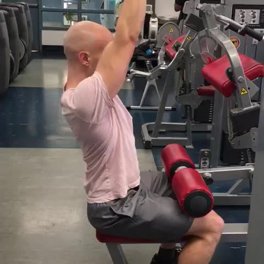
Quick Facts
Key Benefit
Targeted mid-back and lat development
Primary Muscles
Lats, Rhomboids, Traps
Secondary Muscles
Biceps, Brachialis, Posterior Deltoids, Rotator Cuff
Equipment
machine
Difficulty
Beginner
Type
Strength
In This Guide
Ready to master the Close-Grip Lat Pulldown?
Track your progress, see improvements over time, and build strength consistently.
Download GravitusThe Close-Grip Lat Pulldown is a versatile back exercise that emphasizes the inner and lower portions of the latissimus dorsi, along with significant engagement of the rhomboids, middle trapezius, and elbow flexors. This variation of the traditional lat pulldown uses a narrower hand position—typically with a V-bar, close-grip handle, or rope attachment—which creates a unique stimulus for back development. The close grip position allows for a greater range of motion through the shoulder joint and increased mechanical tension on the muscles of the middle back. While the standard wide-grip pulldown tends to emphasize back width, the close-grip variation typically provides greater stimulation for back thickness and detail, particularly in the mid-back region. Beyond muscle development, this exercise helps develop fundamental pulling strength that transfers well to various athletic movements and daily activities. The controlled nature of machine-based training makes it accessible for beginners while still providing ample challenge for advanced lifters through load progression. Whether your goal is to build a more developed back, improve posture by strengthening the posterior chain, or prepare for more challenging bodyweight exercises like pull-ups, the Close-Grip Lat Pulldown deserves consideration as a valuable component in your training program. Its joint-friendly nature and adjustable resistance make it suitable for nearly all training populations when performed with proper technique.
Benefits of Close-Grip Lat Pulldowns
The Close-Grip Lat Pulldown offers several unique advantages that make it a valuable addition to any back training program.
Mid-Back Development
Emphasizes the inner portions of the latissimus dorsi and rhomboids, creating muscular detail and thickness in the middle back region.
Increased Range of Motion
The closer grip typically allows for greater shoulder extension at the bottom of the movement, potentially increasing muscle growth stimulus.
Joint-Friendly Alternative
Provides a controlled environment for developing pulling strength without the joint stress that can sometimes accompany heavy barbell rows or pull-ups.
Pull-Up Preparation
Develops the specific strength needed for bodyweight pulling exercises while allowing for appropriate load selection based on current ability.
Postural Improvement
Strengthens the upper back musculature that counteracts the forward-rounded shoulder position common in modern lifestyles.
Proper Form & Technique
Setup
- Adjust the thigh pad of the lat pulldown machine to fit snugly against your thighs when seated.
- Select the appropriate attachment—typically a V-bar, close-grip handle, or rope.
- Sit facing the machine with your feet flat on the floor, approximately hip-width apart.
- Grasp the attachment with a neutral grip (palms facing each other) if using a V-bar, or with hands positioned close together if using a straight bar.
- Position yourself so that your arms are fully extended overhead but your torso remains upright, with a slight lean backward.
- Engage your core muscles and maintain a slight arch in your lower back, chest up and shoulders down.
- Ensure your thighs are secured under the pads to prevent lifting off the seat during the movement.
- Take a deep breath and brace your core before initiating the movement.
Movement
- Initiate the movement by driving your elbows down and slightly back, pulling the attachment toward your upper chest.
- Focus on using your back muscles rather than your arms, imagining your hands as hooks and your elbows as the driving force.
- Pull until the attachment reaches your upper chest or just below your chin, depending on the specific attachment used.
- At the bottom position, squeeze your back muscles, focusing on bringing your shoulder blades together and down.
- Hold the contracted position briefly to maximize muscle engagement.
- Slowly return the attachment to the starting position with control, feeling the stretch in your lats without allowing the weight stack to rest completely.
- Maintain a consistent breathing pattern, exhaling during the pulling phase and inhaling during the return phase.
- Repeat for the desired number of repetitions while maintaining proper form throughout.
Key Form Tips
Elbow Path
Focus on driving your elbows down and back rather than just pulling with your hands to maximize back engagement.
Torso Position
Maintain a slight backward lean (about 10-15 degrees) throughout the movement, avoiding excessive leaning or swinging.
Scapular Movement
Allow your shoulder blades to fully protract at the top of the movement and fully retract at the bottom for optimal range of motion.
Wrist Position
Keep your wrists in a neutral position throughout the exercise, avoiding excessive flexion or extension that could cause strain.
Head Alignment
Maintain a neutral neck position by focusing your gaze slightly forward rather than looking up or down excessively.
Muscles Worked
Primary Muscles
- lats: The large, flat muscle covering the width of the middle and lower back, primarily responsible for the pulling action.
- Rhomboids: The muscles located between the spine and shoulder blades that retract the scapulae during the pulling motion.
- traps: The diamond-shaped muscle extending from the neck to the middle back, assisting with scapular retraction and depression.
Secondary Muscles
- biceps: The front arm muscles that assist in flexing the elbow during the pulling movement.
- Brachialis: The muscle beneath the biceps that contributes significantly to elbow flexion during pulling movements.
- posterior deltoids: The posterior portion of the shoulder muscles that assist in the pulling motion and shoulder extension.
- rotator cuff: A small muscle near the shoulder that works with the latissimus dorsi to extend and internally rotate the arm.
- Infraspinatus: One of the rotator cuff muscles that provides stability to the shoulder joint during the movement.
Common Mistakes and How to Fix Them
Using Excessive Body Momentum
Swinging the torso or using momentum to pull the weight down rather than controlled muscle contraction. Reduce the weight to a level that allows strict form, focus on initiating the movement from your back muscles, and consider using a slower tempo (e.g., 3 seconds down, 1 second hold, 3 seconds up) to eliminate momentum. If necessary, have a training partner watch your form or film yourself to identify unwanted body movement.
Pulling With the Arms
Relying primarily on bicep strength rather than back muscles to move the weight. Focus on initiating the movement by pulling your elbows down and back rather than pulling with your hands. Imagine your hands as hooks and your elbows as the driving force. Before beginning the set, perform a few scapular retractions (squeezing your shoulder blades together) to activate your back muscles and establish the mind-muscle connection.
Insufficient Range of Motion
Not bringing the attachment close enough to the body or not allowing full extension at the top of the movement. Focus on pulling the attachment to your upper chest or just below your chin at the bottom of the movement, and allow your arms to extend fully at the top position, feeling a stretch in your lats without letting the weight stack rest. Consider using a slightly lighter weight if full range of motion cannot be achieved.
Forward Head Posture
Jutting the head forward as the attachment approaches the body, potentially causing neck strain. Maintain a neutral neck position throughout the exercise by keeping your chin slightly tucked and gaze directed slightly forward. Imagine lengthening the back of your neck as you pull the weight down, creating space between your ears and shoulders. If necessary, position yourself so you can see your head position in a mirror during the exercise.
Elevating the Shoulders
Lifting the shoulders toward the ears, particularly at the beginning of the movement, which reduces lat engagement. Before initiating the pull, consciously depress your shoulder blades by drawing them downward away from your ears. Maintain this depressed position throughout the set. Consider incorporating specific activation exercises for the lower trapezius (like prone Y-raises) before lat pulldowns to improve scapular positioning.
Close-Grip Lat Pulldown Variations
Attachment Variations
-
V-Bar Lat Pulldown
Using a triangular or V-shaped attachment that places the hands in a neutral position (palms facing each other) for a natural pulling angle.
-
Rope Pulldown
Using a rope attachment that allows the hands to separate slightly at the bottom of the movement, potentially increasing the range of motion.
-
Straight Bar Pulldown
Using a straight bar with hands positioned approximately shoulder-width apart or closer, typically with an overhand grip.
-
Cable Lat Pulldown Single Arm
Performing the movement one arm at a time with a single handle attachment, allowing for identification and correction of side-to-side imbalances.
Technical Variations
-

Close-Grip Pulldown to Sternum
Pulling the attachment to the lower chest/upper abdominal region with a more pronounced backward lean, potentially increasing the stretch on the lats.
-

Close-Grip Pulldown with Pause
Incorporating a 2-3 second isometric hold at the bottom position to increase time under tension and enhance the mind-muscle connection.
-

Eccentric-Focused Close-Grip Pulldown
Emphasizing the lowering (eccentric) phase by taking 3-5 seconds to return to the starting position after each repetition.
-

Close-Grip Pulldown with Scapular Depression
Beginning each repetition with a focus on pulling the shoulder blades down before initiating elbow flexion, emphasizing the lower trapezius.
Frequently Asked Questions
While both variations target the latissimus dorsi as the primary muscle, they tend to emphasize different aspects of back development. Close-grip lat pulldowns typically allow for a greater range of motion through the shoulder joint and place more emphasis on the lower and inner portions of the latissimus dorsi, as well as the rhomboids and middle trapezius. This variation often contributes more to back thickness and detail. The close grip also tends to place more emphasis on the biceps and brachialis as secondary movers. Wide-grip pulldowns are often associated with developing back width due to the position of the lats during the exercise, though this is somewhat simplified. The wide grip limits the range of motion slightly but may create more direct tension on the upper fibers of the lats. From a joint health perspective, many lifters find the close-grip position more comfortable for the shoulders, particularly those with shoulder mobility limitations. Rather than choosing exclusively between them, incorporating both variations in your training program (either within the same session or across different training days) can provide comprehensive back development. Some research suggests that grip width may not significantly alter muscle activation patterns in trained individuals, meaning both variations can be effective for overall back development when performed correctly.
Pulling the attachment to your upper chest or just below your chin is generally the most effective and safest approach for most individuals. This position allows for optimal back muscle engagement while minimizing stress on the shoulder joints. Pulling behind the neck (to the base of the skull) was once common but is now generally discouraged for most trainees due to the externally rotated and potentially compromised shoulder position it requires, especially under load. This position can increase impingement risk, particularly for those with existing shoulder issues or limited mobility. The chest-level pulldown enables a more natural movement pattern that aligns with functional pulling actions. It allows for proper scapular retraction and depression while maintaining safe shoulder positioning. For optimal muscle recruitment, focus on driving your elbows down and back while maintaining a slight backward lean of your torso (about 10-15 degrees). This positioning helps maximize the range of motion and lat engagement without compromising joint safety. If you're specifically targeting the lower lats, you might consider pulling to the sternum (lower chest/upper abdominal region) with a slightly more pronounced backward lean, though this should be done with appropriate weight and careful attention to lower back positioning.
The appropriate weight depends on your experience level, current strength, and training goals. As a general guideline, select a weight that allows you to complete your target repetitions with proper form while still finding the last 2-3 reps challenging. For beginners, this typically means 10-15 repetitions with a weight that feels moderately difficult. Intermediate lifters might work in the 8-12 repetition range with a more challenging weight. Advanced lifters might occasionally use heavier weights for 6-8 repetitions to emphasize strength development. The key indicator is form - if you're unable to initiate the movement with your back muscles, maintain proper torso position, or achieve a full range of motion, the weight is too heavy. Unlike some exercises where progressive overload primarily comes through weight increases, for lat pulldowns, progression can effectively come through improved technique, increased time under tension, and perfect form rather than simply adding weight. Many successful programs periodize training to include both heavier, lower-rep phases and lighter, higher-rep phases to stimulate different aspects of muscular development. Rather than focusing exclusively on the weight used, track multiple performance metrics including weight, repetitions, sets, rest periods, and how the movement feels in terms of mind-muscle connection.
While close-grip lat pulldowns and pull-ups share similar movement patterns and muscle involvement, they each offer unique benefits and aren't perfect substitutes for one another. Lat pulldowns are excellent for controlled, progressive loading and allow precise weight selection based on your current ability level. This makes them ideal for beginners who cannot yet perform pull-ups, those working around certain injuries, or for higher-repetition back training. The machine-based nature also allows for isolation and technique refinement.
Pull-ups, as a bodyweight exercise, involve greater core stabilization, scapular control, and overall body tension. They typically deliver greater overall muscle activation due to the free-form nature of the movement and the need to control your entire body weight. From a functional perspective, the ability to pull your own bodyweight has more direct carryover to many real-world activities and other exercises.
For optimal development, consider these approaches - If you cannot yet perform pull-ups, use lat pulldowns as both a training tool and as specific preparation for pull-ups. If you can perform some pull-ups, consider starting your workout with pull-ups while fresh, then completing additional volume with lat pulldowns. For balanced development, many successful programs include both exercises, either within the same session (pull-ups first, followed by pulldowns) or on different training days (pull-ups on one back day, pulldowns on another). The ideal approach depends on your specific goals, current abilities, and overall program structure.
Video Demonstrations
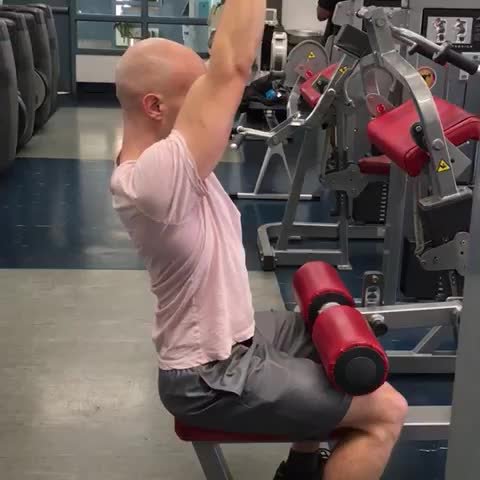
Log in to watch video demonstrations
Login to Watch3 video demonstrations available
Find more video demonstrations in the Gravitus app
Track your progress with Gravitus
Download Gravitus to log your workouts, track your progress, and join a community of fitness enthusiasts.

Helpful Resources
One Rep Max Calculator
Find your one rep max for any exercise without maximal testing. Essential for developing effective strength training programs.
Calculate 1RMWorkout Programs
Follow structured workout programs created by fitness professionals to maximize your strength and muscle gains.
View Programs